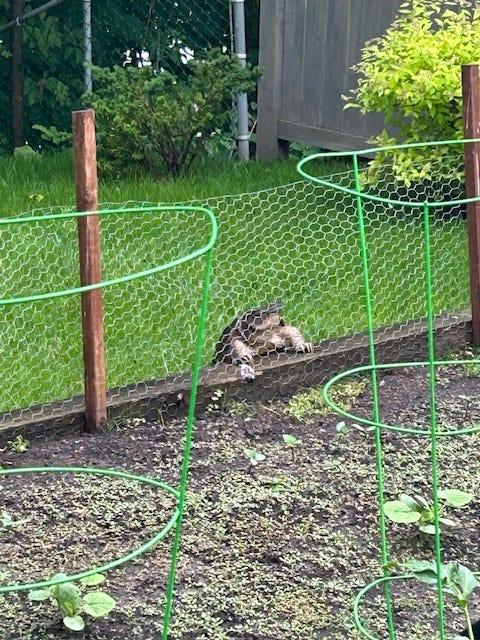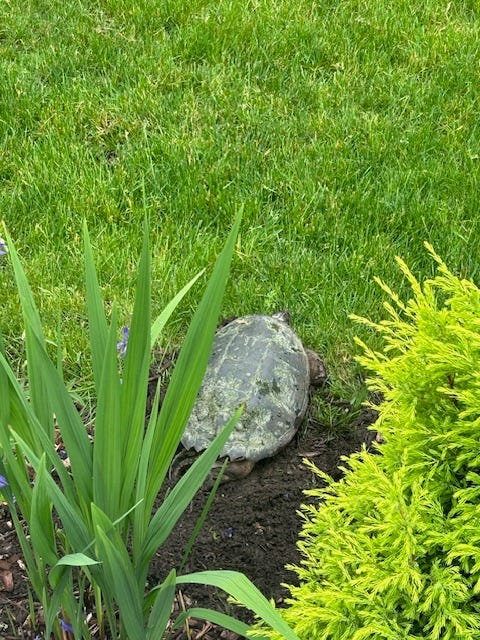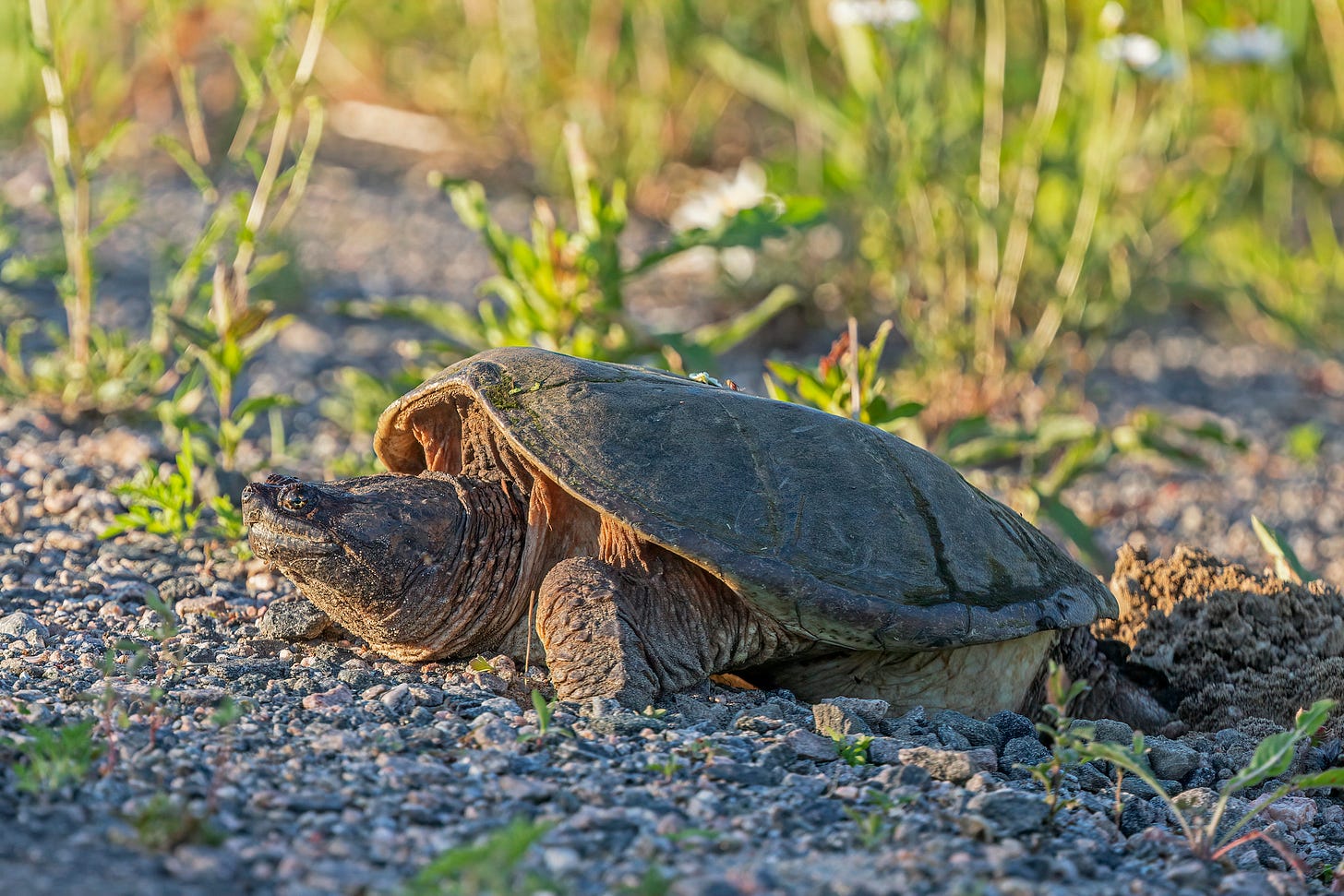Turtle time
“I didn’t know what it was at first—a huge toad? Out at the edge of the garden, trying to get over the fence,” my niece related with equal angst and excitement. Rebecca lives along a branch of the Rideau River near Ottawa, so often has interesting sightings in her backyard. She was taking a break, working from home one day in early June, when she spotted her latest visitor, a snapping turtle searching for a good place to lay eggs. And determined to climb over the chicken wire keeping bunnies from devouring the lettuce, basil, carrots, beets and beans behind it.
“I felt so bad for her, the poor thing,” Rebecca told me at a family gathering this week. Giving up on her target, the nice tilled soil in the garden—how do they know it’s there?—the momma turtle eventually tried digging in the thick lawn—also impossible—and finally crawled over to a flowerbed at the edge of the deck and started excavating. Rebecca kept track of her progress during later breaks and felt even worse when a thunderstorm came by, pouring rain, and the turtle gave up entirely.
Happy surprise, she was back the next day, farther down the flowerbed, digging a hole, then filling it up again, presumably laying a clutch of eggs while Rebecca was busy working. Relieved and thankful, after all they’d gone through together, my niece searched the web for a good turtle nest cage design, put frame and wire together and fastened it in place with tent pegs. Then found out she should have used 2-inch chicken wire so baby turtles could crawl out if they hatch when she’s not around, so she plans to rebuild it in the next few weeks.
Quite remarkable, the steep, brushy riverbank the turtle managed to climb to reach the yard, a 70 degree slope some ten meters high. An effort requiring commitment, determination, intelligence and love, standard qualities of motherhood.
Rebecca had an even larger snapper make it over the fence to lay eggs in her garden ten years ago, but never saw babies emerge. My neighbour Ana, down the road near the marsh, shared pictures of a huge snapping turtle clambering over her garden fence that same spring. I’ll never forget finding a painted turtle trying to get through the chicken wire protecting our own garden one year, and carrying her to a convenient flowerbed near our local wetland, hoping she’d like to lay her eggs there. Your heart goes out to them all, especially turtle moms crossing busy roads everywhere to lay eggs in the gravel shoulders. Where raccoons and skunks eat most of them within 48 hours.
Hopefully, turtle egg laying is just about complete for the summer by now, and lots of babies are safe underground, getting ready to hatch out in a few weeks and scramble toward the nearest pond, creek or lake. We have 56 species in North America, with snappers and painted turtles the most numerous. Protected in their shells, turtles have been around on Earth for 200 million years, before and after dinosaurs.
Just imagine life as a freshwater turtle. Born in the earth but breathing air. Living underwater but crawling out to bask in the sun. Sleeping through winter till summer comes around again, and they can line up on logs, or wallow in the shallows, delighting humans who happen to come by.










Rebecca is proving to be a very good steward in her nature abode❤️